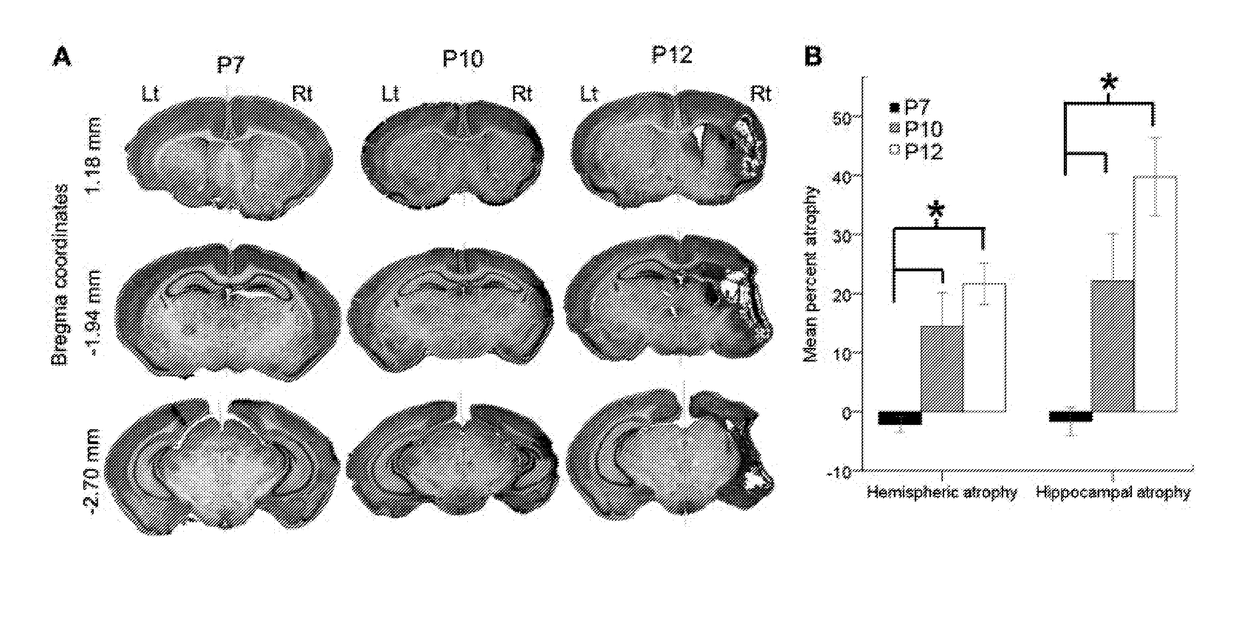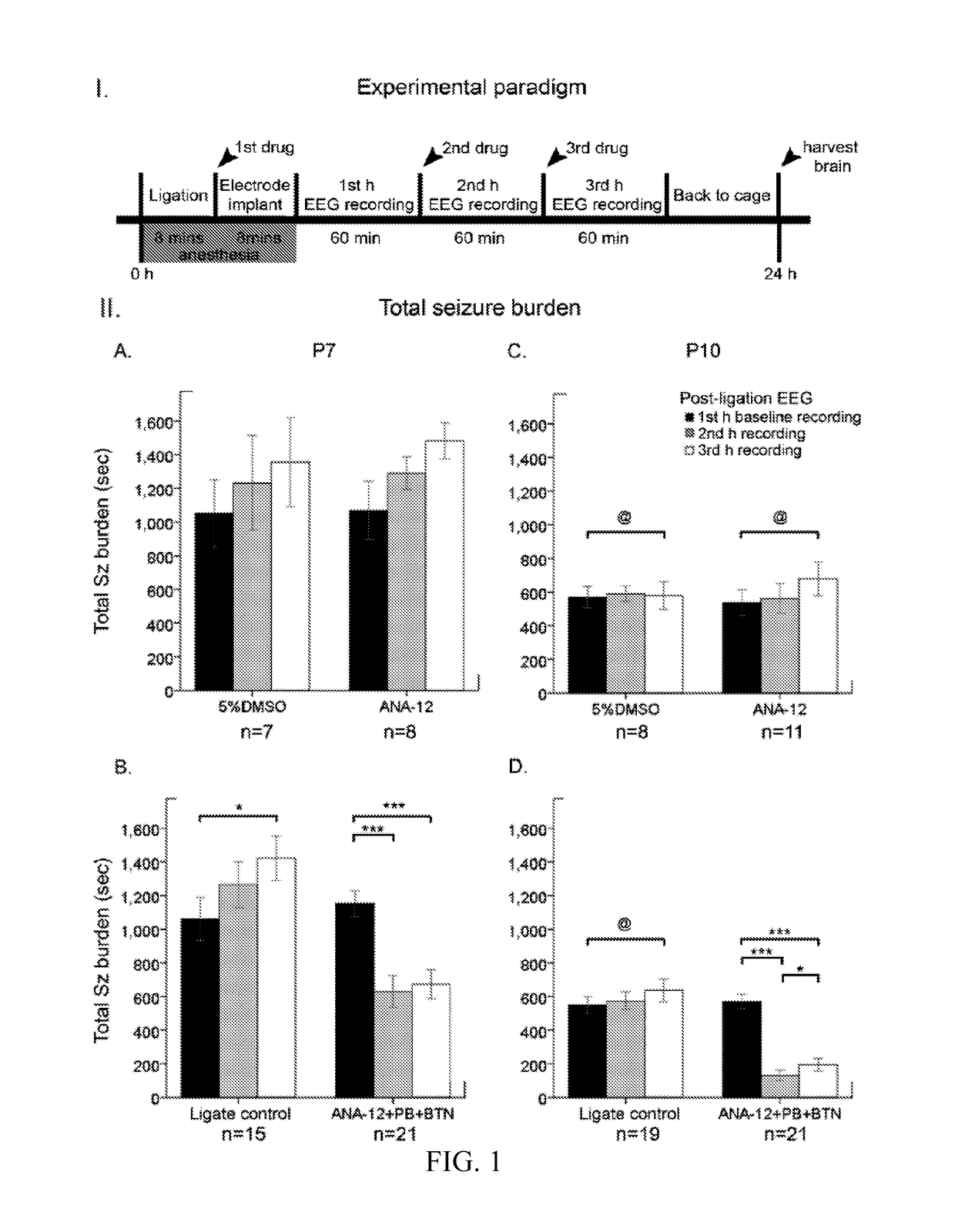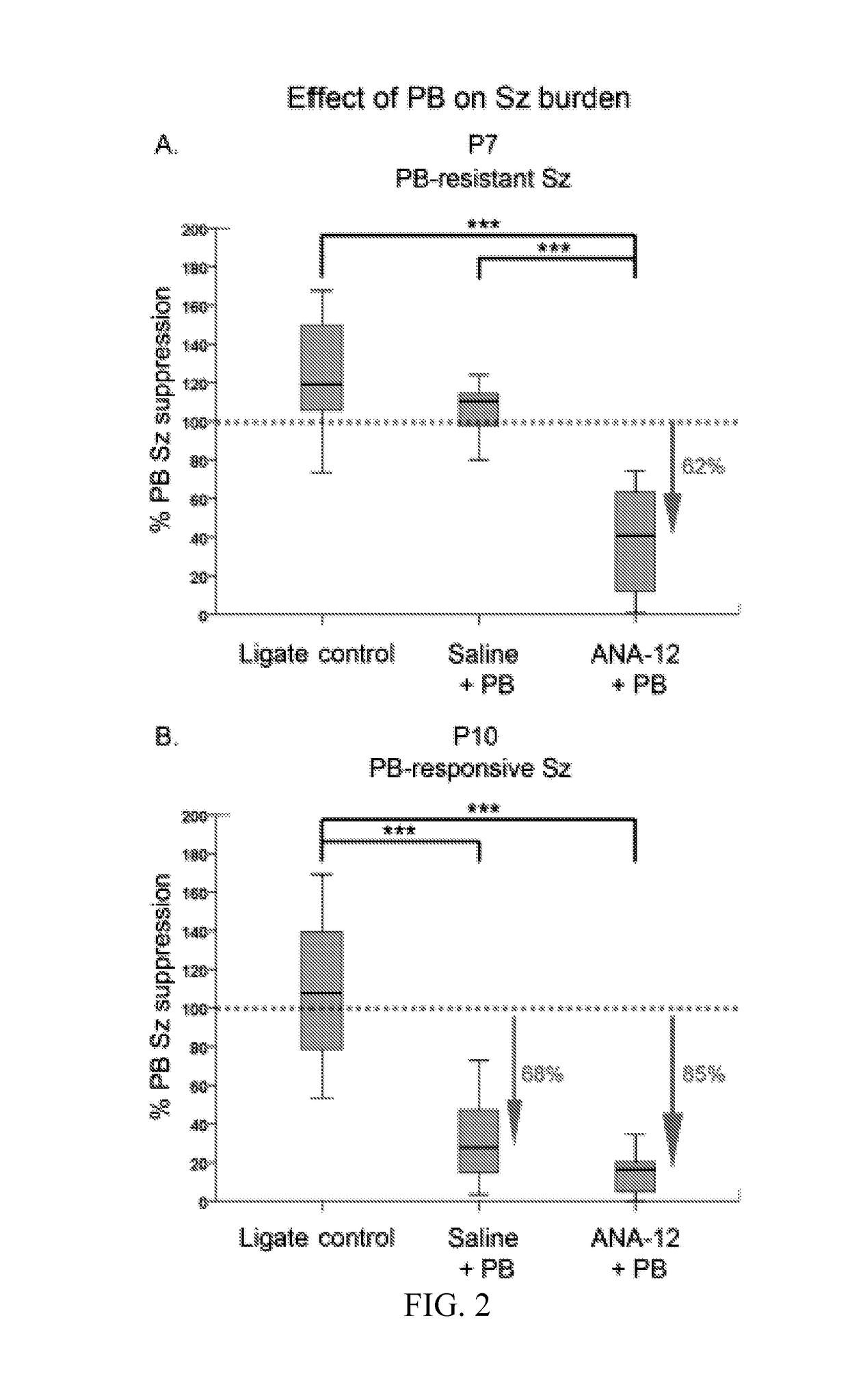Compositions and methods for treating refractory seizures
- Summary
- Abstract
- Description
- Claims
- Application Information
AI Technical Summary
Benefits of technology
Problems solved by technology
Method used
Image
Examples
example 1
-β Inhibition Rescues Phenobarbital-Resistant Seizures in a Mouse Model of Neonatal Ischemia
[0056]Neonatal seizures are commonly associated with hypoxic-ischemic encephalopathy (HIE). Phenobarbital (PB)-resistance is common and poses a serious challenge in clinical management. Using a newly characterized neonatal mouse model of ischemic seizures, this study investigated a novel strategy to rescue PB-resistance. A small-molecule TrkB antagonist, ANA12, used to selectively and transiently block post-ischemic BDNF-TrkB signaling in vivo determined whether rescuing TrkB-mediated post-ischemic degradation of KCC2 rescued PB-resistant seizures. The anti-seizure efficacy of ANA12+PB was quantitated by; 1) electrographic seizure burden using acute continuous video-EEGs and 2) post-treatment expression levels of KCC2 and NKCC1 using western blot analysis in postnatal day 7 and 10 (P7, P10) CD1 pups with unilateral carotid ligation. ANA12 significantly rescued PB-resistant seizures at P7, and...
example 2
Sex-Dependent Susceptibility to Phenobarbital-Resistant Neonatal Seizures: Role of Chloride Transporters
[0112]Ischemia in the immature brain is an important cause of neonatal seizures. Temporal evolution of acquired neonatal seizures and their response to anticonvulsants are of great interest, given the unreliability of the clinical correlates and poor efficacy of first-line anti-seizure drugs. The expression and function of the electroneutral chloride co-transporters KCC2 and NKCC1 influence the anti-seizure efficacy of GABAA-agonists. To investigate ischemia-induced seizure susceptibility and efficacy of the GABAA-agonist phenobarbital (PB), with NKCC1 antagonist bumetanide (BTN) as an adjunct treatment, we utilized permanent unilateral carotid-ligation to produce acute ischemic-seizures in postnatal day 7, 10 and 12 CD1 mice. Immediate post-ligation video-electroencephalograms (EEGs) quantitatively evaluated baseline and post-treatment seizure burdens. Brains were examined for st...
example 3
of KCC2 Agonist Treatment of Neonatal Seizures
[0157]FIG. 20 presents data using CLP290 (n=4) in an experimental paradigm similar to ANA-12 indicating that a KCC2 agonist can act independently as an anti-seizure agent and with PB to completely block all ischemic seizures at a 20 mg / kg dose in the model when compared to the vehicle injection (HPCD). Bottom trace in each panel shows the seizure frequency as scored by electrographic seizure activity on raw EEG in blue. Middle trace shows gamma frequency seizure burst activity on 3 h EEG and top blue trace shows low frequency activity due to movement artifacts during ischemia induced status. This finding indicates that as a KCC2 agonist CLP290 also works efficiently to not only reverse PB-resistant seizures but act as an anti-seizure agent by itself. Arrow heads indicate time of 1 hourly drug injections from start of the 3 h recording.
PUM
 Login to view more
Login to view more Abstract
Description
Claims
Application Information
 Login to view more
Login to view more - R&D Engineer
- R&D Manager
- IP Professional
- Industry Leading Data Capabilities
- Powerful AI technology
- Patent DNA Extraction
Browse by: Latest US Patents, China's latest patents, Technical Efficacy Thesaurus, Application Domain, Technology Topic.
© 2024 PatSnap. All rights reserved.Legal|Privacy policy|Modern Slavery Act Transparency Statement|Sitemap



